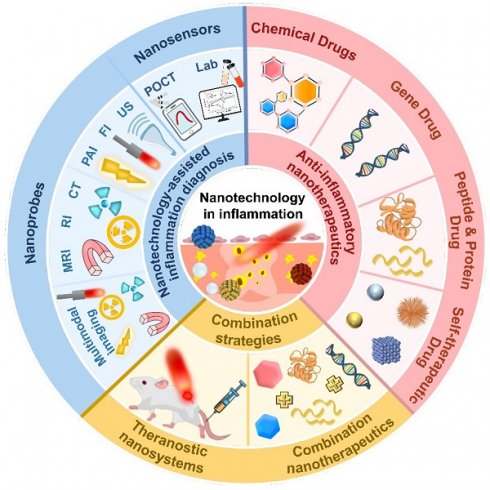
Scientists Create Innovative Non-Invasive Cancer Detection Technique Utilizing Zinc Oxide Nanowires
**Summary:** Researchers at the Institute of Science Tokyo have introduced a non-invasive method for detecting cancer by leveraging zinc oxide nanowires to capture and analyze micro-RNAs in urine specimens. In a significant study, this technique, enhanced by machine learning, showed remarkable accuracy in identifying patients with lung cancer, opening avenues for earlier diagnosis and significantly improving treatment results.
**Published in: Analytical Chemistry, October 18, 2024, DOI:** [10.1021/acs.analchem.4c02488](https://doi.org/10.1021/acs.analchem.4c02488)
**Reading time:** *4 minutes*
### **Transforming Initial Cancer Detection**
The early discovery of cancer is considered the ultimate objective in treatment, as diagnosing the disease in its initial stages can greatly boost survival rates. Nevertheless, achieving a timely and precise diagnosis has traditionally posed a considerable obstacle, especially with non-invasive techniques. Now, a state-of-the-art advancement in nanotechnology is presenting new possibilities: a straightforward urine examination capable of detecting cancer, potentially revolutionizing the diagnostic arena.
This groundbreaking study has been led by Professor Takao Yasui and his team at the Institute of Science Tokyo. The approach employs zinc oxide nanowires to isolate micro-RNAs (miRNAs) found in urine, representing a major advancement over more invasive techniques such as biopsies.
### **An Intriguing Microscopic Investigation**
Central to this innovation is the comprehension of miRNAs—molecular messengers frequently involved in cancer progression. Professor Yasui emphasizes, “Circulating miRNAs in blood are predominantly encased in extracellular vesicles and convey essential regulatory insights. When properly analyzed, these miRNAs can serve as potent cancer indicators, as their profiles vary between healthy individuals and those suffering from cancer.”
MiRNAs are not just biological phenomena; they significantly influence gene expression and signaling, rendering them excellent targets for cancer detection. The Tokyo research team concentrated on these miRNAs through the application of zinc oxide nanowires, which function akin to minute fishing nets, capturing miRNAs from urine samples for further examination.
Following the analysis of 200 urine samples, the research team successfully identified an astonishing 2,486 distinct miRNA types, a comprehensive molecular dataset that informed the creation of their diagnostic algorithm.
### **Introducing Machine Learning for Insight**
After collecting the miRNAs, the subsequent task was to interpret the extensive dataset. This is where machine learning comes into play.
The research group employed sophisticated machine learning algorithms to analyze the thousands of miRNAs, pinpointing specific patterns among cancer patients. Through this evaluation, they uncovered a unique subset of just 53 miRNA types that could effectively differentiate cancer patients from healthy individuals.
In addition, Yasui’s team identified another category of miRNA molecules capable of detecting early-stage lung cancer—crucial for prompt diagnosis and treatment initiatives. The potential for early detection represents a significant breakthrough, given lung cancer’s notorious difficulty in being diagnosed until it has advanced considerably.
“Early detection is essential for enhancing treatment effectiveness,” Yasui states. “The capacity to accurately identify stage-I lung cancer through a simple urine sample could be transformative for cancer diagnostics.”
### **The Role of Nanotechnology in Health**
These findings herald a promising new era in cancer detection—where nanotechnology marries big data analysis. By creating non-invasive, highly precise techniques to recognize cancer sooner than previously possible, this research suggests a future where patient outcomes can be significantly enhanced. Rather than subjecting individuals to invasive procedures, healthcare providers could soon utilize a straightforward urine test for cancer screening.
Moreover, the scalability and ease of such diagnostic methods may lower costs for both patients and healthcare systems. As researchers continue to improve the zinc oxide nanowire method and broaden testing to encompass other cancer types, the potential benefits for global health are immense.
In an era where cancer remains among the top causes of mortality globally, this advancement may help bring about a new epoch of earlier, simpler, and more effective diagnostic practices.
—
### **Glossary of Terms**
– **Micro-RNA (miRNA):** Small non-coding RNA molecules that are involved in regulating gene expression and often play a role in cancer progression.
– **Extracellular Vesicles:** Minute membrane-bound entities released by cells capable of transporting proteins, lipids, and genetic material like miRNAs from one cell to another.
– **Nanowires:** Minuscule wire-like structures made from zinc oxide, utilized in this context to seize molecular substances like miRNAs.
– **Machine Learning:** A form of artificial intelligence where computer systems process patterns and make decisions based on large volumes of data.
—
### **Test Your Knowledge**